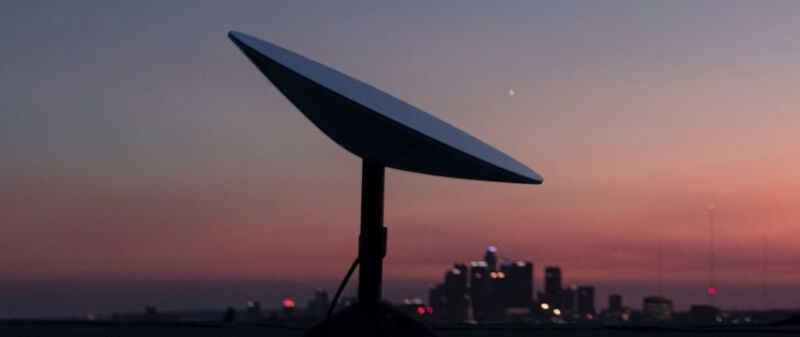SpaceX asks FCC for license expansion after 700,000 people register interest.
SpaceX has asked the US for permission to deploy up to 5 million user terminals for its Starlink satellite-broadband network in the US after nearly 700,000 people registered interest in the service.
SpaceX, in March, received a Federal Communications Commission license for up to 1 million user terminals (i.e., satellite dishes) in the United States. That would allow for 1 million homes to receive the service, but SpaceX now wants to quintuple that number.
“SpaceX Services requests this increase in authorized units due to the extraordinary demand for access to the Starlink non-geostationary orbit satellite system,” the company told the FCC in a license-change request on Friday. “Even though SpaceX has yet to formally advertise this system’s services, nearly 700,000 individuals in all 50 states signed up over a few days to register their interest in said services at www.starlink.com. To ensure that SpaceX can accommodate the apparent demand for its broadband Internet access service, SpaceX Services requests a substantial increase in the number of authorized units.”
SpaceX added the signup form to the Starlink website in mid-June. It asks people to enter their email and street address to “get updates on Starlink news and service availability in your area.” SpaceX has said it will offer beta access in the fall of this year to prepare for a full commercial launch.
The 700,000 people who registered interest haven’t committed to purchasing anything. Still, Starlink will likely have many potential buyers in the US among people who either lack fiber or cable Internet access or are stuck with a single provider and no other choices.
Starlink is mainly targeted at rural homes.
Starlink will face some physical limits on how many homes it can serve in densely populated areas such as Los Angeles, SpaceX CEO Elon Musk said recently. “We’ll have some small number of customers in LA. But we can’t do a lot of customers in LA because the bandwidth per cell is simply not high enough,” he said. Starlink wouldn’t face such restrictions in rural areas. As Musk noted that “Starlink will serve the hardest-to-serve customers that telcos otherwise have trouble doing with landlines or even with… cell towers.”
SpaceX has FCC permission to launch nearly 12,000 satellites in low-Earth orbits, allowing for much lower latencies than traditional satellite services. SpaceX has launched 540 Starlink satellites so far, with its next launch set to increase that number to about 600.
Last week, Amazon received US approval to launch 3,236 low-Earth orbit satellites for its similar “Project Kuiper” broadband service.
